The post Missing Paris: Running The Paris Marathon appeared first on The Expeditioner Travel Site.
]]>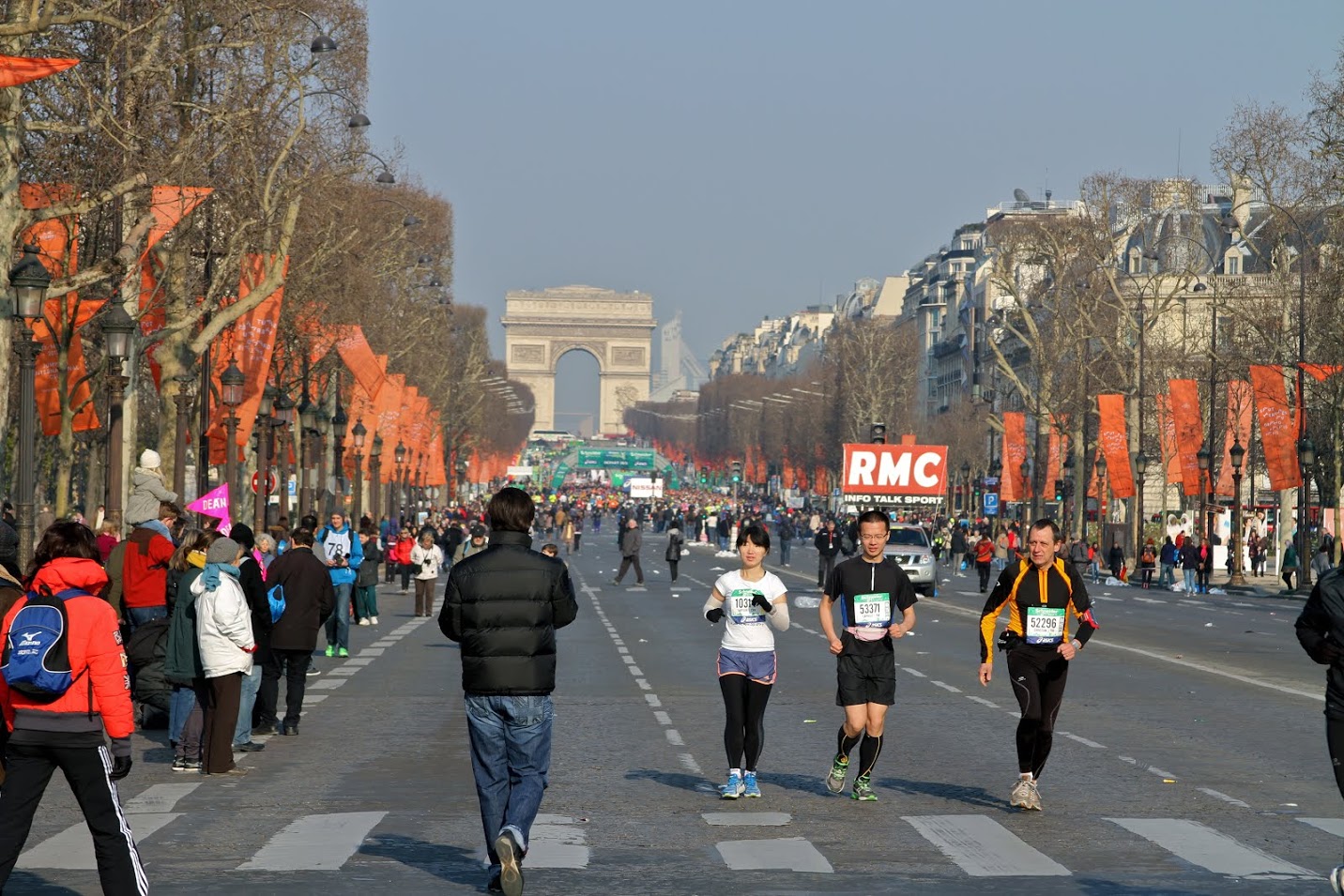
Seven miles into the Paris Marathon I was content, blissfully lost in the illustrious City of Light. But then I saw the pacesetter and I was hooked. So fanatically attached to the mythical four-hour mark, I missed it all. Focused on the clock, I missed Paris. Well, almost.
The day before the Paris Marathon, I visited the running expo in a gigantic convention center. Strolling from vendor to vendor, I stopped at a poster the race organizers had created for the almost 40,000 participants. Alphabetized and running horizontally on the massive poster were the names of every runner.
Laid over the names was the marathon route through Paris, a thick white line that happened to obscure an unlucky few. I watched as participants pointed gleefully at their names, making peace signs or a thumbs-up for cameras. Some growled as the great white route bulldozed through a letter in their name. My name was nowhere to be found. It was completely obscured by the route.
In the Marathon de Paris runners must show their race bibs to a volunteer before they can squeeze through a narrow opening in a ten-foot-high fence to join the other 39,967 participants. After you cross the threshold, you become a kind of wild park animal for friends, family and spectators dangling from windows and sipping espressos in cafes. The pictures that day have the unfortunate familiarity of a zoo. Me, hopping in place, making goofy faces and tongues at the camera.
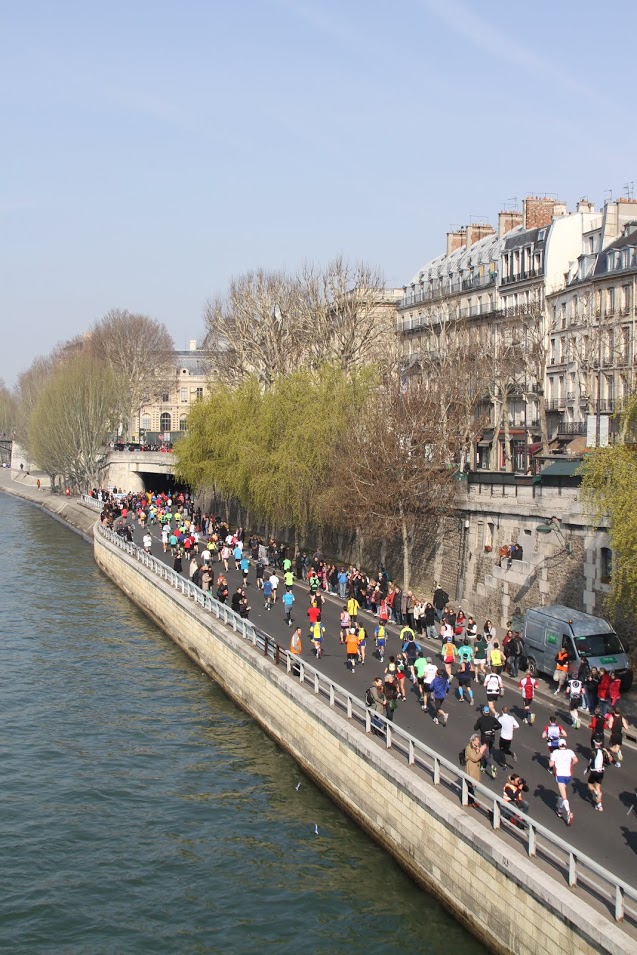
It was Sunday, a little after 8:00 a.m. I emerged from the Metro, stepped onto the Avenue des Champs-Élysées and gazed up at the Arc de Triomphe, where the 26.2-mile race began and ended. There was a palpable buzz in the air for the fifth-largest marathon in the world, a whirling electricity of nerves and exhilaration.
I felt bad for any shop owner with a toilet. Runners bunched up in droves outside bathroom doors, staring at the floor, tapping their feet as Nature called. “Sir?” a waiter asked me, raising his finger as I darted through the front door of a café. But I was already halfway down the steps, shamed a bit. I joined the long line for the bathroom, and smiled each time a flush rang out. Turns out the bladder wasn’t equipped to stow two coffees, a full Gatorade and who knows how many anxious gulps of bottled water.
As I slipped through the gate, I joined runners bunched into different start zones grouped by self-predicted finish times. I had chosen the 4 hour, 30 minute zone based on my two previous marathons where I had run 4:10 and 3:55. It was a respectable category, I thought, one that conformed to my original plan of just taking the whole thing easy. It was April and the morning air was frigid. I watched people bounce in place and blow into cupped fingers. Some folded their legs in half, stretching. Others crossed their arms and studied the pavement. Doubled-up on fleeces I rubbed my hands together vigorously.
Looking around, I felt like I had attended a Halloween party without a costume. A young man next to me wore a pink bunny suit. The man in front of him had donned a Superman costume. There was a group of girls dressed as cocktail waitresses and a group of guys in full banana suits. I saw a woman in a business suit and a man in wig; even someone wearing a 6-foot-high Eiffel Tower.
To pump us up, a spirited race volunteer stood atop a metal crate and shouted encouraging words through a loudspeaker, none of which I could understand because it was in French. Clapping and dancing to blaring techno music, she managed to synchronize hundreds into a jumping jacks routine and then a kind of collective jive, perhaps the largest flash dance in history.
Minutes later, I heard the gun fire, but I didn’t move. I couldn’t. There were literally thousands of people bunched up in front of me. I had to wait almost 30 minutes before the waves cleared out. As I crossed the start line with fellow runners shouting and holding their hands high, I witnessed the marvelous city in glorious fashion.

Ten minutes into the race I found a rhythm, happy to be warm. I took a sip of water and scampered down a hill, rubbing shoulders with runners. I circled the obelisk in the Place de Concorde then turned onto Rue de Rivoli. The Champs-Elysees opened up into five or six lanes and people began to create cushions of space. The course was flat, never higher than 200 feet and fairly straightforward. Seven miles in, I passed through the Bois de Vincennes. I was strangely okay with the fact that I still had to jog more miles than most people’s daily commutes.
The route took us by countless fountains, manicured trees, cinemas, gardens, museums, galleries and cafe after cafe. Half the fun was admiring the creativity of the spectators hugging the road. According to the race website, there were between 200,000 and 240,000 spectators present for the city-wide party.
While running, I locked eyes with a 70-year-old woman in a red and white costume. She was stomping her feet and somehow fashioning a melody with two wooden dowels. I smiled then ate an energy gel, losing myself in the musical acts and stunning architecture, the shouting crowds and the huffing and puffing of racers.
Like river logs nearing a smaller stream, the course narrowed and funneled us into a tunnel — one of many. The sun ducked away as I entered and came shoulder-to-shoulder with strangers, so close I could practically smell the mashed banana on the soles of their shoes.
Separating us briefly from the spectators, the tunnel provided a profound camaraderie, a visceral we-are-in-this-together bond between those crazy enough to run the race. I turned off my music and heard heavy breathing echo off the brick walls then mix with the slapping of hundreds of pairs of sneakers meeting the cobblestone street. In the middle of the tunnel someone let out a war cry. Another joined in, and then everyone was cheering triumphantly.
As I exited the tunnel a man passed me, his eyes fixed on his watch. Others were similarly glued to their ticking clocks, calculating their paces obsessively, watching their heart rates like an emergency room doctor monitors a patient during intubation. As the man patted his belt, holding neatly packed GU Energy Gels, I wondered what idiom consumed his inner chatter. “Don’t go out too fast,” perhaps he was repeating to himself. Surely his head phones were blasting, “Eye of the Tiger.”
I was just glad to be there. And then it happened. Something awful. I saw her. She wasn’t hard to pick out of the crowd. People huddled around her like mothers clutching infants in hopes of getting a kiss from the Pope. She was the pacesetter — a trim, perfectly athletic girl with a pole attached to her back. At the top of the pole was a flag maybe six feet above her that said, “4:00 hr.” I made the decision to pass her, and stay past her.
For my second marathon in Newport, Rhode Island, three years ago, I had somehow run a 3:55. I’m a rugged fellow and built for power, so I’ve always been into contact sports — football in high school, rugby in college. Beating the mythical 4-hour mark in Newport was a sheer display of willpower. I remember planning to “enjoy” that race also. That was until I asked an impossibly fit older man the time. “I’m on pace to break four hours,” he had said, looking at his watch. “Follow me and you will, too.” I did. And I broke four hours. I even remember tearing up as I neared the finish line, in awe that my legs hadn’t become traitorous and folded as I desperately tried to hit some “target time” for which my body had no interest.
My plan with the Paris marathon was to enjoy it, but I have a pattern for flip-flopping mid-race. As I accelerated past the pacesetter, I decided to beat the four-hour mark again; maybe set a personal best. I adopted a Spartan concentration and mumbled some platitude like, “Pain is weakness leaving the body.” I gained five, maybe ten minutes on the pacesetter and my focus intensified. But as I fantasized about the goal, Paris’s beauty slipped away. Everything slid to the periphery, subservient to the purpose, the 4-hour mark.
In a place you could spend a lifetime wandering charming streets, I was too absorbed to notice any of its gifts, off in a dream. I was absent, essentially. I also started to undervalue accomplishments like passing the half-marathon mark. As I reached this milestone in the heart of Paris, I said, “13 more to go,” and dug in.
I heard spectators shout my name because it was written on the race bib, but their voices were far away. I gave a child a high five, but the boy might as well have been a mannequin. I even ignored the Eiffel Tower as it came into view. No longer was the engineering masterpiece an iconic symbol, but rather a momentary pause from ruminations of steamrolling across the finish line better, faster, stronger.
Every 3.1 miles (5 kms) were refueling stations. Like the tunnels, they created their own bottlenecks. As I neared a station around the 15-mile mark I was overcome with conflicting desires. On the one hand, there was the primal urge to satisfy depleted sugar demands. But there was also the compulsion to waste no time. These opposing forces, when multiplied across countless other racers also hooked on achievable time goals, creates an unbelievable carnage, much like what you’d see if a fisherman accidentally knocked a bucket of chum into a patch of ocean infested with sharks.
I took an elbow in the side as an ambitious twenty-something cut and shoved his way to the start of the table dispensing food. He grabbed a handful of raisins and smashed them into his face without any sort of accuracy. To avoid much of the mayhem all one would have to do is stop at the table further down the line where it’s less populated with wild runners. But we didn’t. We were on schedule. On pace. I fell in behind the raisin bandit and snagged two bananas. I bit into an orange slice and ducked out of the chaos. As I left the station I watched runners toss plastic cups aside, almost never hitting one of the many trashcans.
It was around mile 17 or 18 when the pacesetter caught up to me. I tried to speed up, but I seized like an engine caught in second gear. My legs were shot, presumably from pushing too hard too fast. Eventually she got away from me and I watched the 4-hour flag bob out of sight. It was then that I made my second game-time decision. I let it go. I detached myself from the pacesetter and the racers around me, and, suddenly, the city of Paris came back into focus.
With over 90 musical groups on the streets, I heard music from the full orchestras to lone drummer boys; from hooligans blowing horns to slick street musicians strumming violas. And there were some characters, too, practically from a Dr. Seuss poem. There were women in blue wigs, gripping white pom-poms. Soldiers in black uniforms and high white socks. A man dressed as a butler, sipping champagne from a thin glass. Streaming from a wire across the road were 112 flags, representing all the participating countries. There were dance groups and rock bands and somehow the performances helped with the misery of it all, a shift of attention from cramping legs.
I came to another refueling station, but this time it was different. I avoided the madness at the front of the line and squeezed in at the end, non-threateningly. I saw a man cramping, so I gave him a sodium tablet and wished him good luck. I probably wouldn’t have done that with a time goal. His pain would have been invisible.
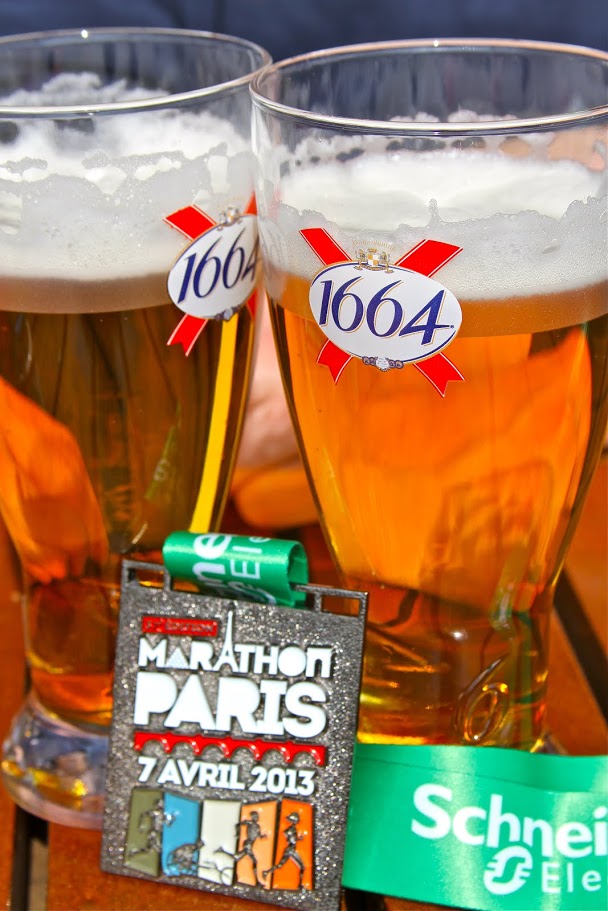
At the end of a marathon there’s no big climax, really. By definition, it’s almost anti-climactic. The last few hundred feet of the Paris marathon came down the Avenue Foch. I had hoped for the end, begged and bargained, and hoped some more. But when it came, it just came.
As I crossed the finish line I took a mighty breath and nodded to myself slowly. Others crossed with their own triumphant gestures: a fist to the sky, a single finger overhead. Though there were infinite variations to demonstrate personal glory, there was one shared sentiment: relief.
Though limping, my body was pleased not be called upon anymore, not just physiologically, but emotionally. The mind, I think, experiences the most relief, no longer subjected to extreme fixation. This relief is a spiritual one. It’s maybe why that glass of beer following such a feat is the “best beer you have ever tasted.” Because your mind is so exhausted it can’t fixate on anything but that beer. It’s too tired to run away, pleasantly captive to the present moment.
Months after the race, I learned that the refueling stations throughout the marathon had actually served cider, beer and wine, and even oysters. The race organizers had even set up a tent at the finish line for foot massages facing the Eiffel Tower. I hadn’t even noticed.

All photos by Kelly Dunbar
ABOUT THE AUTHOR
 Dustin Grinnell enjoys all things extreme, welcomes misadventures and greatly enjoys taking the contrary position in conversation. His travel pieces and essays have appeared in such publications as Verge Magazine and Narratively. He is the author of the science fiction thriller The Genius Dilemma, and has written a feature-length screenplay. He is currently a science writer for a biomedical research institute in Cambridge, Massachusetts.
Dustin Grinnell enjoys all things extreme, welcomes misadventures and greatly enjoys taking the contrary position in conversation. His travel pieces and essays have appeared in such publications as Verge Magazine and Narratively. He is the author of the science fiction thriller The Genius Dilemma, and has written a feature-length screenplay. He is currently a science writer for a biomedical research institute in Cambridge, Massachusetts.
The post Missing Paris: Running The Paris Marathon appeared first on The Expeditioner Travel Site.
]]>The post Explore Paris Through Art With Your Phone appeared first on The Expeditioner Travel Site.
]]>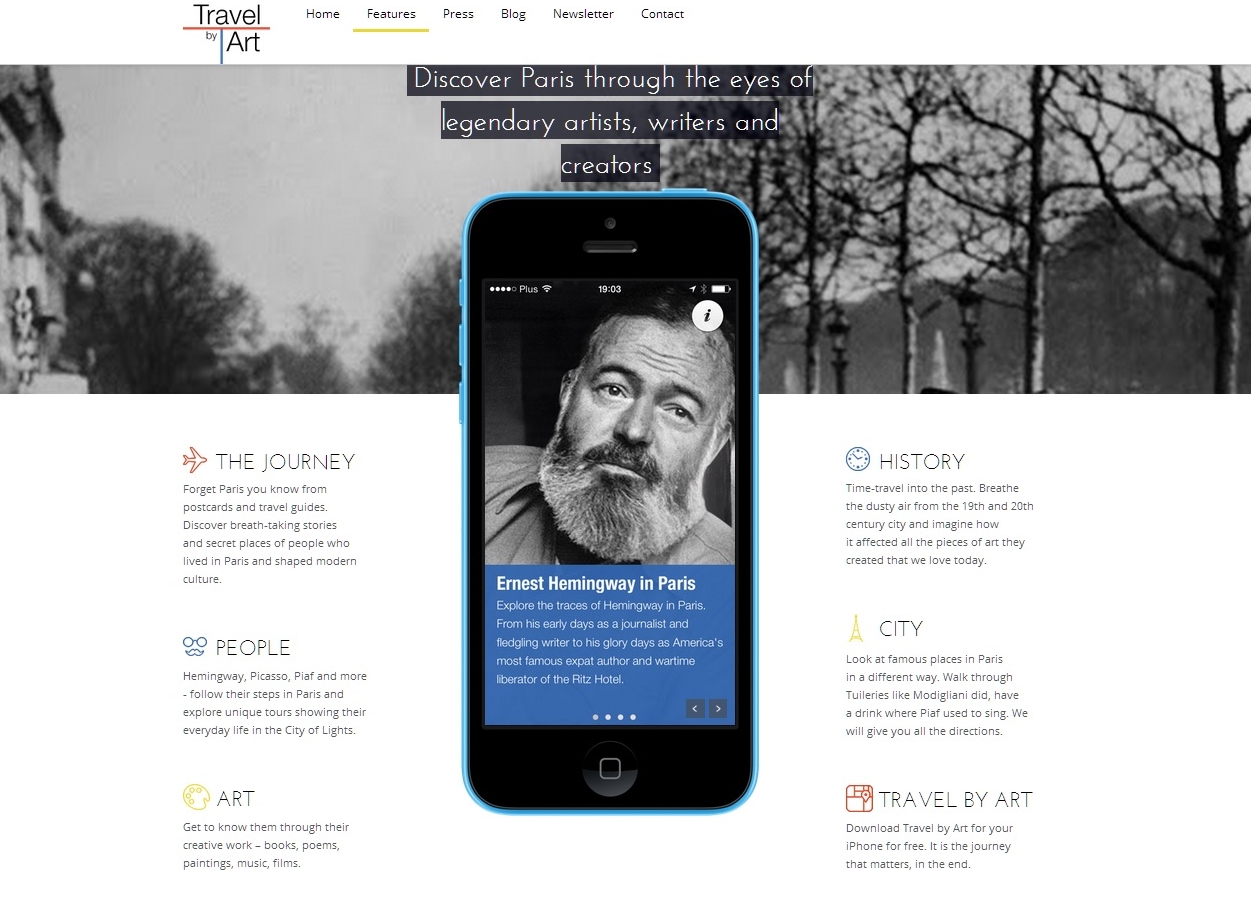
Here’s a great new app for those heading to Paris this year. TravelbyArt is a new iPhone app that lets you discover Paris through the eyes of the city’s legendary artists, writers, singers and composers of the 20th century, with twenty curated tours that reveal the important places in the lives of such artists as Ernest Hemingway, Pablo Picasso and Edith Piaf.
TravelbyArt guides the users to dozens of places in Paris where the artists lived, the studios where they worked, and of course, the restaurants and bars where they ate, gathered and met friends. Each location has its own mesmerizing story, enriched with multimedia content including excerpts from books, audio recordings, famous art works and photos. In addition, the app allows users to get to know the artists’ stories through a chronological feature that allows the user to explore, date by date, the lives of the artists.
The app also includes easy-to-follow offline maps in case you’re not using the local phone service and are relying on Wi-Fi only.
“We have been working tirelessly to make TravelbyArt app a first-class mobile travel experience. This unique approach, to follow in the steps of great artist, allows one to see Paris in a completely new way. I hope this method of time-travelling will be appealing not only for Hemingway or Picasso fans but also for everyone interested in modern culture,” explains Beata Misiewicz, the founder of TravelbyArt.
You can download TravelbyArt for iPhone for free from the App Store by searching for TravelbyArt or by clicking here.

/
 Matt Stabile is the founder and Editor-in-Chief of TheExpeditioner.com. You can read his writings, watch his travel videos, purchase the book he co-edited or contact him via email at any time at TheExpeditioner.com.
Matt Stabile is the founder and Editor-in-Chief of TheExpeditioner.com. You can read his writings, watch his travel videos, purchase the book he co-edited or contact him via email at any time at TheExpeditioner.com.
The post Explore Paris Through Art With Your Phone appeared first on The Expeditioner Travel Site.
]]>The post 6 Books You Must Read Before Going To France appeared first on The Expeditioner Travel Site.
]]>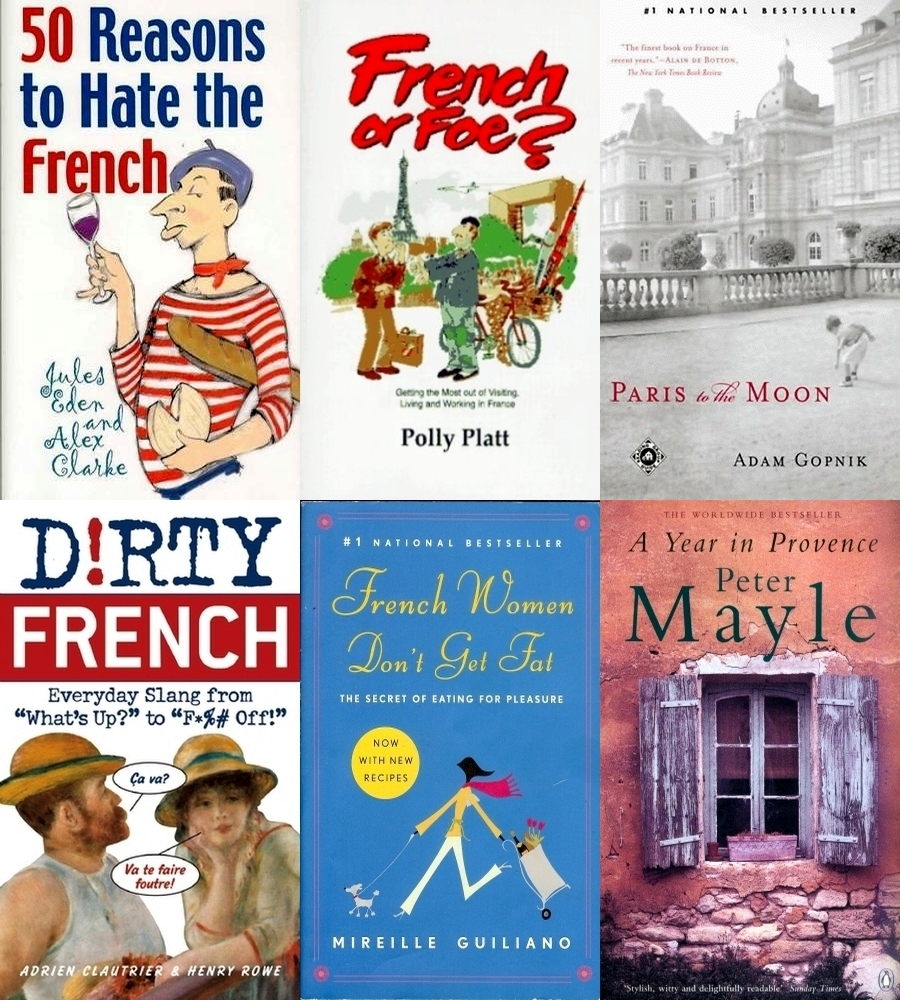
The stereotype of the French is that they are stinky, rude and have a predilection for bad comedy, but they are also elegant, thin and have a predilection for fine art and good literature.
The French are nothing if not an enigma — a study in paradoxes. How can one wear the latest Balmain creation yet go out sans deodorant? Truth be told, the French are far more complicated than the sum of their stereotypes.
When I studied abroad in Paris I learned it’s not that they are smelly, it’s that Americans are obsessed with hygiene. The French aren’t rude, we’re just too smiley. See? It’s all about perception. Having said that, whether you plan on living, studying or just visiting France, you might want to study up on what makes the French tick. To help you out, try reading one or all of the following books. You know, so you don’t come across as a boorish American or anything like that.

1) 50 Reasons to Hate the French by Jules Eden and Alex Clarke
Just in case you’re not sure if you love or hate the French, Jules Eden and Alex Clarke give you 50 hilarious reasons to detest them. Using history to illustrate many of their points, the duo delve into the literature, art and politics of France. From Depardieu to the lack of reverence for time, you’ll find yourself disliking those frog eaters, until you realize you still want to see the Eiffel Tower and croissants taste pretty dame good.
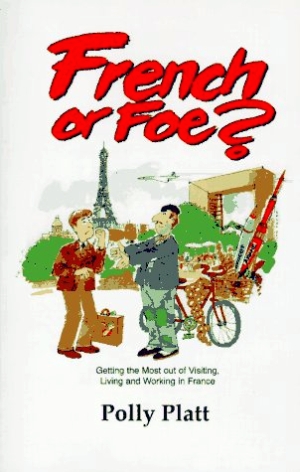
2) French or Foe?: Getting the Most Out of Visiting, Living and Working in France by Polly Platt
When you’re in France, there may be many times when you wonder whether someone is being purposely rude to you or whether they are just being French. Polly Platt tackles the stereotype of the “rude Frenchmen” head on by explaining the differences in our cultural attitudes and mannerisms to make your stay in France oh-so-pleasant.
So when the waiter is ignoring you during your next meal, you’ll now know that it’s not because he is secretly plotting against Americans, but because he wants you to take your time and enjoy your meal.
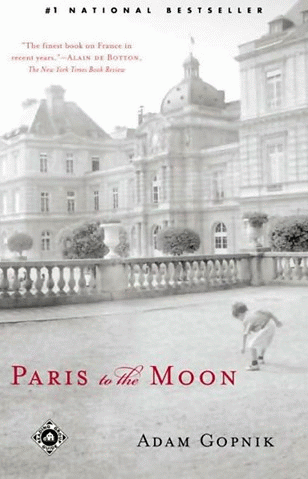
3) Paris to the Moon by Adam Gopnik
If you’ve ever wondered why there is no French version of Barney the purple dinosaur or why Café de Flore is the height of chic while Les Deux Magots is the equivalent of a public toilet, this is the book you need to read.
With a splash of humor, a dollop of personal anecdotes and a whole lot of love for the French, Adam Gopnik’s essays are an intellectual take on the most simple of French habits, including their obsession with striking. You may not approve when the métro you need to get to the Champs-Elysees is no longer running, but at least you’ll understand. Sort of.

4) Dirty French: Everyday Slang from “What’s Up?” to “F*%# Off!” (Dirty Everyday Slang by Adrian Clautrier
In light of all this newfound understanding, you may find yourself making friends or wanting to flirt it up with a Frenchie. Throwing out some slang will let the other party know you’re hip to French culture. Gems like “I feel like partying (Je suis d’humeur a faire la tete), or “Damn girl your body is banging” (Oh cousine, chaud devant) will get you in the French fray in no time.
Or in spite of all this fabulous understanding you may acquire, you may still need to tell someone in no uncertain times to mind their own business. Since you’re in France, it’s only fitting you should be able to potentially curse someone out in their own language. This way they will actually understand you and you can still remain unfailingly polite for speaking in the local language.
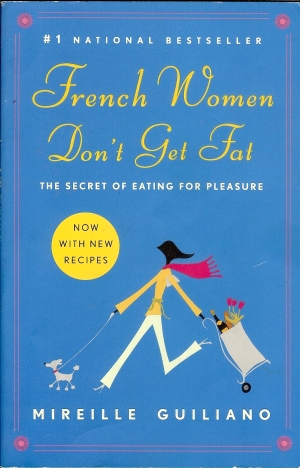
5) French Women Don’t get Fat by Mireille Guilano
If a year studying abroad and living with a French family taught me anything, it’s that the French love food like Americans love football and artificial sweetener. The reason most French women (and men) don’t get fat is because they don’t stuff their faces 24/7. And when they do, it’s not with a bag of BBQ potato chips.
The French don’t just eat — they savor. They dine. A meal is a three-hour affair that just happens to accompany a rousing debate about politics or which boulangerie has the best bread. Mireille Guilano goes into all of this with great detail, allowing even the junkiest of eaters to revamp their habits. Read this and you’ll understand how and why the French women can eat chocolate all the time and still look like Brigitte Bardot.
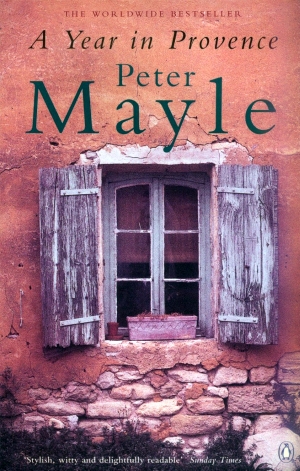
6) A Year in Provence by Peter Mayle
Who hasn’t thought of leaving it all behind and running off to France? I certainly have. Oh wait, I did do that. Armed with dreamy visions of fresh brie cheese, gothic cathedrals and men with French accents sweeping me off my feet, I said no to another year of frat parties and Natty Light for the beauty of France.
Then reality hit. In my case it was in the form of dog poo on the sidewalks. In the case of Peter Mayle, it was namely in the form of a freezing winter, nosy neighbors and French bureaucracy. But through it all, Mayle tells the story with a light-hearted affection for his adopted country capturing the more comical aspects of everyday French life. At the end, you can’t help but love the French.
By Rachel Khona

About the Author
 Rachel has served as contributing editor for Vaga and has written for Cosmopolitan, Inked and Ask Men. She is currently working on a memoir about being raised by a conservative Indian family, swindling European cab drivers and scaling glaciers. Find out more about Rachel at RachelKhona.com or follow her on Twitter at @RachelKhona.
Rachel has served as contributing editor for Vaga and has written for Cosmopolitan, Inked and Ask Men. She is currently working on a memoir about being raised by a conservative Indian family, swindling European cab drivers and scaling glaciers. Find out more about Rachel at RachelKhona.com or follow her on Twitter at @RachelKhona.
The post 6 Books You Must Read Before Going To France appeared first on The Expeditioner Travel Site.
]]>The post The Curious Case Of The Female Napoleon At The Louvre appeared first on The Expeditioner Travel Site.
]]>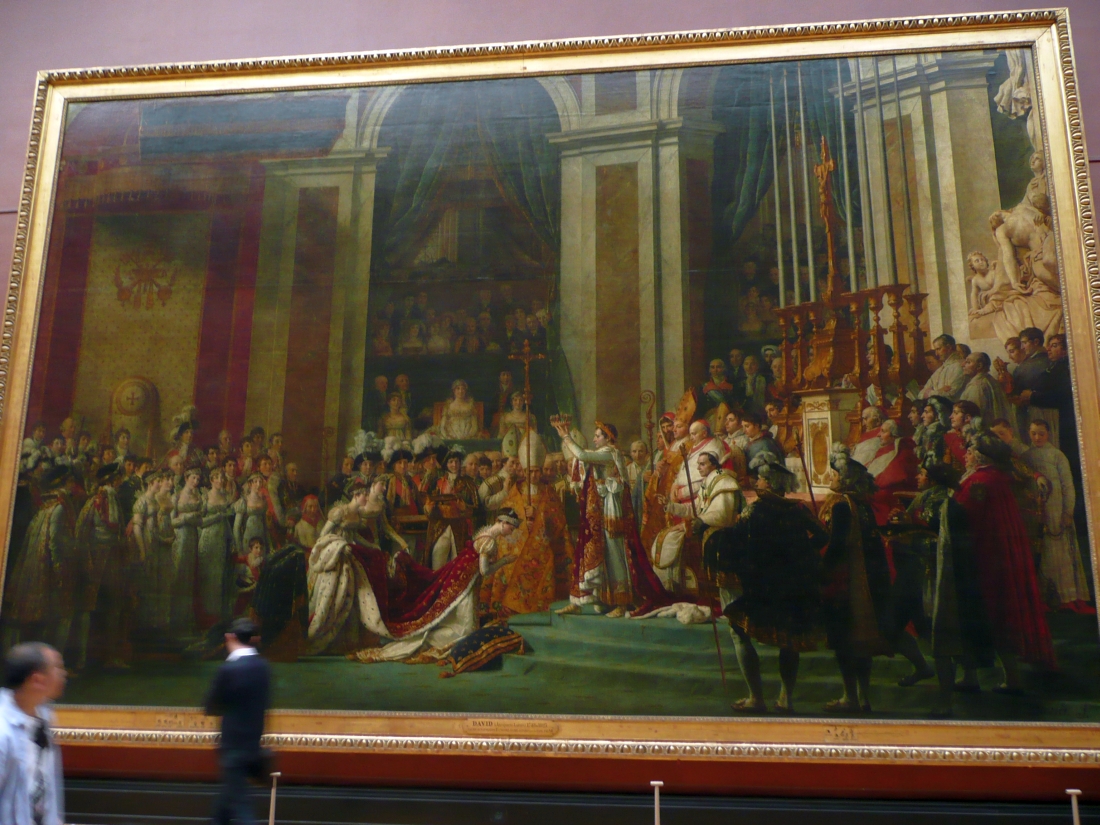
I am sitting on a bench in the Denon wing of the Musée du Louvre. It is almost noon and in front of me is The Consecration of Napoleon (otherwise known as The Consecration of the Emperor Napoleon and the Coronation of Empress Joséphine on December 2, 1804), one of the museum’s most famous works in its collection. In my hand is a tattered museum guide in English.
According to the guide there are still more wings with more floors with more important paintings that I should see. So far the only other painting of importance (as per the pamphlet) that I have seen is the Mona Lisa. However, I have already walked by, and sometimes even paused and examined at length, hundreds of other paintings so far.
Given the short amount of time I had in Paris, I had found myself traveling criss-crossing across the Seine, museum-hopping to the point that I was now becoming tired of all the art that was around me. My legs are tired but more than the physical exertion it is the loneliness that is weighing me down.
I can hear multiple languages spoken around me. Whenever I hear English being spoken I strain to overhear the conversation. Maybe eavesdropping in on them can make me forget that I am in Paris alone.
An elderly couple walks by and stops at the painting. After a brief examination, the lady remarks, “This is the second-largest painting . . . ,” and almost immediately lowers her voice so as not to disturb me. Oh, if only they knew how much I really wanted to silently listen in on their conversation. One can get a lot of information about a painting by simply sitting in front of it and listening in on people’s conversations. Not a lot of them spend time with the painting. Some of them are just happy clicking a picture. A few even bother to read the title.
In the time that I sit on that bench, I learn a lot of the history of the painting. The painting is by Jacques-Louis David and has been revised once. Napoleon did not consider the Pope worthy enough to crown him, so the original painting featured Napoleon holding the crown above his head in the act of crowning himself — the Pope merely present to consecrate the act. Napoleon’s mother was not happy with the fact that his son considered himself above the Pope and actually did not attend his “self-coronation,” but Napoleon had David include her anyway.
The version of the painting that I am sitting in front of is the revision of the original painting, again done by David. In the revised painting, Napoleon is seen crowning Josephine as the Empress, but the title remained unchanged, and hence the Consecration of Napoleon has Napoleon crowning Josephine as the Empress.
After the nameless faces move on to another painting I get up to get a closer look at the canvas.
I pore over the details of the painting in my mind when I hear them, long before I see them. There are about 10 students nearby, all dressed in yellow sweaters; a tall, muscular woman with them in red stuck out like a sore thumb — obviously their teacher.
The students walk behind her slowly, dragging their feet. A few of them have earphones plugged to their ears. They stop directly in front of the painting.
“This here is the Consecration of Napoleon. Come closer everybody.” With a wave of her hand the instructor gathers everyone around on either side of the painting. Well, almost everyone.
Two boys chewing gum refuse to join the fold. They stand aloof with their hands tucked into their pockets and their backs to the painting, completely unaware that they are blocking a poor lady from passing through.
“Mark! Andy! Step aside and let the nice lady pass, please,” the instructor shouts to them before giving the lady an apologetic smile.
The instructor seems unruffled by their lack of interest. Instead, she begins to explain the painting to the rest of the group who care to listen.
I return to my seat on the bench, hoping there is more I can learn about the painting. Mark and Andy sit on a bench beside mine.
The one with the curly hair bends down and puts his head within the palm of his hands while the other crosses his legs and digs his elbow into his friend’s back.
“Dude, the Mona Lisa sucked,” said the friend who had crossed his leg.
The curly-haired boy nods in agreement. “Yeah, she is not even pretty!”
“And the painting is so damn tiny!”
I can’t believe we came all the way to see that.”
“Sucks man. I am hungry.”
With that they plug their earphones to their ears and shake their heads to music loud enough for me to hear.
Meanwhile, the instructor wraps up her explanation, “. . . and that is why you only see Josephine kneeling for the consecration of Napoleon.”
With that the lady leads the group forward.
Andy and Mark show no signs of rejoining them. The instructor sighs. She walks over to the boys with her hands on her hips, and with an exasperated look asks, “Andy, Mark, would you like to join us?”
With that she heads back to the front of the group, leaving the two boys to make their decision.
The two get up slowly. One of them walks over to the painting, hands tucked into his pocket.
He reads the title. “The consecration of Napoleon.”
His curly-haired friend walks over and stands beside him, and in a sudden flash of revelation, shouts out, “Dude, I thought Napoleon was a guy!”
By Marie Lisa Jose

[Image via MapThePlanet]
ABOUT THE AUTHOR
 Lisa spends all her vacation days traveling to different corners of the world, seeking out adventures and finding stories waiting to be told. When not on vacation she is either planning for one or recovering from one. You can visit her blog at mjose.org.
Lisa spends all her vacation days traveling to different corners of the world, seeking out adventures and finding stories waiting to be told. When not on vacation she is either planning for one or recovering from one. You can visit her blog at mjose.org.
The post The Curious Case Of The Female Napoleon At The Louvre appeared first on The Expeditioner Travel Site.
]]>The post When Paris Turns Into Saint Tropez appeared first on The Expeditioner Travel Site.
]]>
The Paris-Plage (Paris Beaches) kicks off in Paris every year in late July, transforming riverside roads usually congested with cars into an urban oasis complete with sandy beaches, deckchairs, food vendors, outdoor concerts and Parisian woman eating ice cream in bikinis (see above). Your welcome.
This year find the riverside beaches at Louvre/Pont de Sully, Port de la Gare and Bassin de la Villette. For more information about what you’ll find and a calendar of events, click here.
[Photo via AFP/The Sydney Morning Herald]
The post When Paris Turns Into Saint Tropez appeared first on The Expeditioner Travel Site.
]]>The post 20 Free Things To Do In Paris appeared first on The Expeditioner Travel Site.
]]>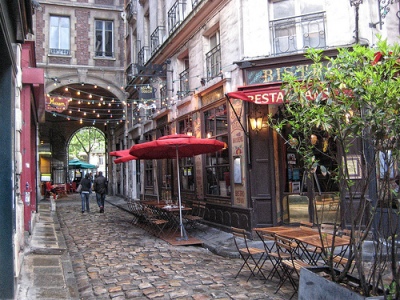
Despite the fact the euro is hitting new lows against the dollar, chances are that any savings in the exchange rate are more than outweighed by the increase you paid in air fare to the Continent. With that in mind, check out Lonely Planet’s list of 20 free things to do in Paris before you go to help out the damage to your wallet.
Included on their list is Père Lachaise Cemetery (the final resting place for Oscar Wilde, Proust, Balzac and Jim Morrison), the Marché d’Aligre (a classic Parisian market known for its authentic feel and lack of snobbery), and the Canal St-Martin (a favorite waterway between République and Gare du Nord in the 10th arrondissement where locals sip wine and take in late summer light).
[To 20 Free Attractions in Paris]
The post 20 Free Things To Do In Paris appeared first on The Expeditioner Travel Site.
]]>The post Paris’s de Gaulle Airport Named Worst In The World appeared first on The Expeditioner Travel Site.
]]>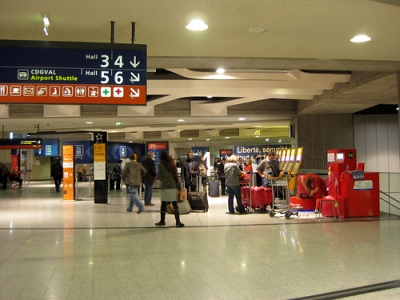
How can a city so revered for its aesthetic beauty and so dependent on tourism (Paris is the most visited city on Earth) have the worst airport it in the world? Perhaps it is for those very same reasons. An overabundance of attention spent on maintaining the city itself and the burden of having to accommodate the tens of millions of visitors every year have helped Paris-Charles de Gaulle Airport earn the right to be named the worst airport in the world, at least according to CNN GO.
With its “[g]rimy washrooms with missing toilet seats . . . broken scanning machines and an overall lack of signage, gate information screens and Paris-worthy bars, restaurants or cafés,” the airport has been likened by more than one traveler as similar to spending time in a prison.
Other airports called out for their lack of function, size and accommodations include Los Angeles’s LAX Airport (“dramatically undersized and moribund”), London’s Heathrow (“a chronic inability to cope with people”) and Honduras’s Toncontín International (“uncomfortable gate chairs, dirty floors and lousy dining options”).
Living in New York I’ve learned that griping about the city’s airports is as celebrated a topic as rent prices and subway service. The Awl recently asked two travel experts to compare and contrast (but mostly to criticize) New York’s two main airports — JFK and La Guardia — the result being an agreement that perhaps the best airports in the world are the ones that, in their words, just get you on the plane the easiest: “No oyster bars, no chair massages, no swimming pools on the roof: Just touch my junk and strap me in.” Who could ask for anything more in life?
The post Paris’s de Gaulle Airport Named Worst In The World appeared first on The Expeditioner Travel Site.
]]>The post 6 Best Places To Eat Dessert In Paris appeared first on The Expeditioner Travel Site.
]]>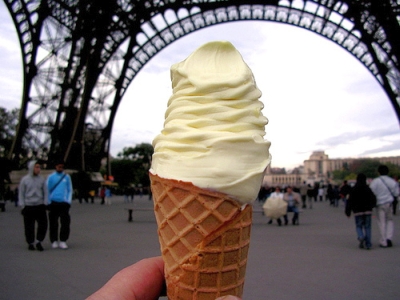
Paris may be known for its decadent, mutli-course meals, but nothing says delicacy like the grand finale: dessert. Actually, it’s not unusual in Paris to mosey into a patisserie or chocolaterie for a midday snack, but one so fantastic that you’d hardly believe it was just a quick bite.
The following list includes some of the more expensive places for desserts, but even at the high prices, the high-profile sweets cost less than a casual cafe lunch. For the cost-conscious, the price really is worthwhile for such mind-blowing treats. Besides, no one ever got too poor eating macarons — and if I sound like Marie Antoinette, then you know we’re headed in the right direction, aren’t we?
Each of the following is a stunning, touristy homage to all things beautiful about French design and cuisine. Of course, that also includes being rude to tourists and jacking up prices, but hey la vie est belle.
Angelina
Angelina, a hop skip and a jump from the Jardin des Tuileries (and Le Musée du Louvre). Perhaps because of its prime location and longevity, Angelina is top of its class in decor, history and crowd management. Rumor has it Coco Chanel ate here, and if you look closely at the crowd around you, you’ll see it’s still an elegant blend of overzealous tourists and the French well-to-do. And while I rarely say this, the ambiance is so beautiful it trumps people-watching.
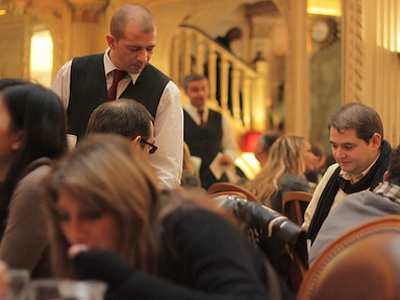 At Angelina, du chocolat chaud is a good place to start when you’re not sure what to order — scandalously called L’Africain for it’s dark color. First of all, call me traditional, but last time I checked, hot chocolate was supposed to be a drink. Around these parts though, the hot chocolate’s so heavy that it’s necessary to save room for it like a slice of cake. With a dab of chantilly (whipped cream), it’s hard not to be sold on the whole experience.
At Angelina, du chocolat chaud is a good place to start when you’re not sure what to order — scandalously called L’Africain for it’s dark color. First of all, call me traditional, but last time I checked, hot chocolate was supposed to be a drink. Around these parts though, the hot chocolate’s so heavy that it’s necessary to save room for it like a slice of cake. With a dab of chantilly (whipped cream), it’s hard not to be sold on the whole experience.
If you like chantilly then chances are you’ll love the Mont Blanc. This creamy dessert derives its name from the mountain in the French alps, and with its snow-colored insides and soft, cool taste, the name makes perfect sense. The Mont Blanc is predominately flavored with chestnut, complementing the sensory experience of cool cream with a warm, nutty flavor. This is a distinctly French treat worth trying.
Ladurée
I much preferred the people, and comparably delicious chocolate and cream, at Ladurée, which actually has mulitple locations. The original location is in the 6th arrondisement, and is characterized by an intimate, exotically decorated charm. I brought my French-speaking friends, my mother, and my discreet artist uncle here, and we were treated well in French time and time again, although I did see tourists with a language barrier struggling. Ladurée created all the desserts for the 2003 film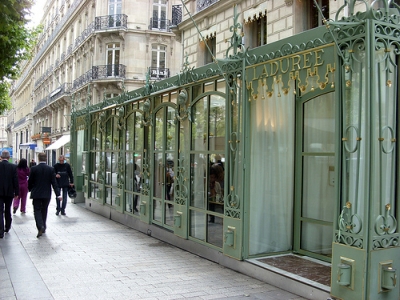 Marie Antoinette, and seeing these beautiful creations before my eyes really brought the old world feel to life.
Marie Antoinette, and seeing these beautiful creations before my eyes really brought the old world feel to life.
However, the more recently opened Champs Elysées location is more easily accessible to the on-the-go traveler (not to mention the handicapped), and of course friendlier and more accommodating to visitors. Upstairs, there is a seating area with red velvet chairs that also offers a dinner menu. There’s even a bar back on the first floor that stays open late, so you can drink cocktails, meet people, and eat high-quality pastries all at once. I had some good times at that bar, which was recommended to me by French students, since it was easy to get to and open late.
Pierre Hermé
A macaron is like a mini, colorful version of an ice cream sandwich, except that the inside is buttercream, and typical flavors include pistachio, raspberry, and rose. Stack three on a saucer with a nice cup of coffee and you’re practically a bonafide Parisian.
Because of their widespread popularity, macarons now come in all shapes and flavors, depending on where you look. Not only are the bite-sized cookies delicious, but there are also full-size options you can sit down and eat as a full dessert.
Good macarons are easy to find all over Paris, but Pierre Hermé is famous for their macarons, and their boutique located in St-Germain lays out their choices as if you were going jewelry shopping. Due to their bright colors and the decorative packaging they are placed in, Macarons make great gifts for all occasions.
Amarino
One of the best things about Paris is the mild weather. Yes, it can get quite chilly in the winter months, but I found myself eating Amarino ice cream cones well into the fall and fresh into the spring. This isn’t your average ice cream though — or even your average gelato for that matter — but rather the kind of rock-your-world full-flavored treat that turns everyday eaters into Julia Childs.
The only place I ever found American style ice cream in Paris was the chain movie theater’s tiny Ben & Jerry’s enclave. Instead, the best bet for the everyday fix is Amarino, a chain located throughout France with multiple locations in Paris. For about 3 euros, you can combine up to three flavors, scooped in the shape of a rose — enough said.
My favorite Amarino location is 4 Rue Vavin, however, if you’re between visiting destinations, there’s also one in the Latin Quarter, near Notre Dame and La Sorbonne.
Glacier Berthillon
But maybe rose-shaped gelato isn’t doing it for you. Maybe you’re tired of blasé sugars and chocolates. Maybe you’re looking for a different kind of eating experience. In which case, the only place left to go is the Ile Saint Louis, for Glacier Berthillon.
At Glacier Berthillion, the flavors vary by season, and include only the freshest ingredients in gelato and sorbet. Perhaps you’ll catch the caramel au gingembre (caramel ginger), but there’s really no wrong way to go. After you’ve finished eating and come back down from cloud nine, try to remember why you’d ever go to Baskin-Robbins.
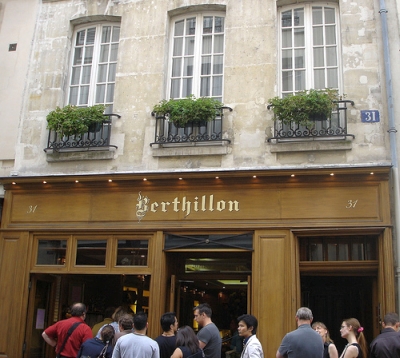 I will always remember the first time I went to Berthillon. It was a sunny, not-too-hot spring day, and there wasn’t a whole lot to do (a pattern to my life in Paris), and my friends were all walking along together. We decided to wander over to l’Ile Saint Louis, and as we entered the dark, wooden enclave, I smiled at a stunning man on a motorcycle. I chose the pear sorbet, and the sensation was so amazing — actually, really amazing — that I made an involuntary noise. The man on the motorcycle heard me and laughed at us American girls, but I really think that it was the ultimate French experience.
I will always remember the first time I went to Berthillon. It was a sunny, not-too-hot spring day, and there wasn’t a whole lot to do (a pattern to my life in Paris), and my friends were all walking along together. We decided to wander over to l’Ile Saint Louis, and as we entered the dark, wooden enclave, I smiled at a stunning man on a motorcycle. I chose the pear sorbet, and the sensation was so amazing — actually, really amazing — that I made an involuntary noise. The man on the motorcycle heard me and laughed at us American girls, but I really think that it was the ultimate French experience.
A Good Mirabelle Pear and Brie
At the end of the day, the sugar experience in Paris is about freshness and careful consideration, which I learned from the French around me. My host family in Paris ate very healthfully and simply. At dinner, we’d start with one or two vegetables as a salad, then a little meat or fish, and finally we’d have cheese and fruit.
But this was just not any cheese and fruit. This was chevre (goat cheese) or brie (a soft, buttery cow cheese), accompanied by the ripest apples and mirabelle pears I have yet to taste. Biting into a pear instantly conjures up images and tastes of what I love about eating in Paris: the colors, the flavors, and most of all, the attention to detail.
Something so simple as a piece of fruit so carefully complements the right kind of cheese, and there’s not a growth horomone or artificial flavoring in sight.
*
So no matter what kind of tastes appeal to you, or how much or how little you want to spend, remember that in Paris — a city with a special knack for providing pleasure — wherever you decide on for dessert, chances are it’s going to be good.
Angelina
226 Rue de Rivoli
www.angelina-paris.fr
Ladurée
75, avenue des Champs Elysées
www.laduree.fr
Pierre Hermé
72 Rue Bonaparte
wwww.Pierre Hermé.fr
Amarino
4 Rue Vavin
www.Amarino.fr
Maison Berthillon
31 Rue St Louis en l’ile
www.Berthillon.fr

About the Author
 Alexandra Bregman has written for The Expeditioner, Beyond Race, poetic and academic publications. She has a traveler’s spirit, big dreams post-Smith College graduation, and can be followed at @alixbregman.
Alexandra Bregman has written for The Expeditioner, Beyond Race, poetic and academic publications. She has a traveler’s spirit, big dreams post-Smith College graduation, and can be followed at @alixbregman.
[La Tour d’Eiffel by Cordoolia/Flickr; Angelina, Paris by Angelina C/Flickr; Laduree/Flickr; Berthillon at Ile St. Louis by Shalini Arunogiri/Flickr]
The post 6 Best Places To Eat Dessert In Paris appeared first on The Expeditioner Travel Site.
]]>The post Let Them Drink Sparkling Water! appeared first on The Expeditioner Travel Site.
]]>
Today, I am in wonder of the world. In a good way.
I saw an article in a newspaper at work. I had to sit down a minute and really think about what it was that shook me. The headline read: “Paris Introduces Sparkling Water Fountains.” I then found a similar article in the Guardian.
My first reaction was, mmm, delicious. I like sparkling water because it is the salty, boring version of sweet sodas. My second thought was: why was I taken with this article? I read on. In France, the people drink a lot of the fizzy stuff. Perhaps it’s a cultural thing, but whatever it is, the waste produced from the consumption needed to be addressed (262,000 tons of plastic waste in 2009 alone).
Then, someone with half a brain knew that to address the problem, they needed to take the bottle away in a way without possibly sparking a revolution. So, to “wean” the people from their wasteful bottles, Eau de Paris (the city’s water supplier) injected carbon dioxide into a public water fountain, with the hopes to do the same to future fountains in an effort to do away with plastic. In Paris, the people know what they like and are proud of it.
In North America, we like bottled water: Perrier, San Pelligrino, carbonated, mineral, Smart, Vitamin, etc . . . We have a lot to choose from for many reasons. The options are wonderful to think about; the plastic waste, not so much.
By Brit Weaver

About the Author

Toronto born and based, Brit is an avid leisure cyclist, coffee drinker and under-a-tree park-ist. She often finds herself meandering foreign cities looking for street eats to nibble, trees to climb, a patch of grass to sit on, or a small bookstore to sift through. You can find her musing life on her personal blog, TheBubblesAreDead.wordpress.com.
The post Let Them Drink Sparkling Water! appeared first on The Expeditioner Travel Site.
]]>The post Appreciating A Quieter Paris In August appeared first on The Expeditioner Travel Site.
]]>
If you love Paris but despise the crowds, then August may be the perfect time to travel to The City of Light. Yes, it’s true that many restaurants, businesses, and cafés shut down during this month, but with half of Parisians leaving the city for annual vacations, you may just enjoy the extra leg room. “In August, a sense of serenity settles over the city,” recalls James Morgan in the recent National Geographic Traveler. Surprisingly, there is still much to see, eat, and admire in a quieter Paris, and you may even find that escaping the pressures of completing a “must-see” list is quite liberating.
Instead you can appreciate the city with a simpler, more Parisian saunter, enjoying the many parks, Sunday museums, flea markets, and breezy cafés. Morgan advises — as is usually always a good bet — venturing off the tourist track, suggesting a stop at the Pére Lachaise cemetery where visitors should avoid the crowded resting place of Jim Morrison, purchase a map for two euro, and search for other “evocative antiques” like, Honoré de Balzac, Frédéric Chopic, Eugéne Delacroix, Georges Bizet, Sarah Bernhardt, and Colette.
If one opts for a cruise up the Marne and Seine, Morgan recommends grabbing lunch at a guinguette, or French “eating-drinking-dancing joint,” hotspots for many free-spirited Parisians during the 18th century to the 1950’s. Located just east of Paris in the town of Marne, the guinguettes were an inexpensive (they were exempt from the city’s liquor tax) way for the working class to wind down on Sunday afternoons.
And if you can’t make it to Côte ? Azur? Why not drop by the annual Paris Plages, which transforms the landlocked edges of the Seine River to an enchanting beachfront, complete with sand, palm trees, pétanque courts, and cafés. The allure of Paris in August can also be admired at the Jardin de Bagatelle for its world-renowned rose competition. The competition is held in June, but the blooming beds are left to thrive in peaceful gardens to inspire and delight all who venture to this botanical gem.
To really experience Paris, Morgan urges travelers to visit one of its many parks. He tempts people to pick a spot and daydream, letting the time pass, as it may, and reflect on the sounds, faces and scents that drift by. The sight of “children sailing small wooden boats around the ponds in the Tuileries garden” may be the perfect ending to a Parisian reverie on a lazy afternoon in August.
By Maria Russo

About the Author
 Maria Russo is a freelance writer who loves natural wonders, good eats, ethical travel, and boutique hotels. Her work has appeared on the Huffington Post, USA Today.com, People.com and A Luxury Travel Blog, among others.
Maria Russo is a freelance writer who loves natural wonders, good eats, ethical travel, and boutique hotels. Her work has appeared on the Huffington Post, USA Today.com, People.com and A Luxury Travel Blog, among others.
When Maria is not writing for her all-time favorite site (that would be The Expeditioner), she spends her time blogging about foreign jaunts and delectable food experiences for her site: Memoirs of a Travel & Food Addict. She is also up to no good on Twitter (@traveladdictgrl, @expedmaria).
The post Appreciating A Quieter Paris In August appeared first on The Expeditioner Travel Site.
]]>The post Your Guide To Paris’s Underground appeared first on The Expeditioner Travel Site.
]]>
A trip through the shadows of the City of Light
By Anthony Cuthbertson
The surface of Paris resembles that of an iceberg peaking its tip above the surface of the water. Beneath, there lies one of the most extensive and complex underground networks in the world. Alongside almost 300 metro stations and their interlinking tunnels weave a web of sewers, abandoned quarries, catacombs, canals and utility lines. The denser the population has become above ground, the deeper they have burrowed to sustain it. Without this vast infrastructure the city would cease to function, utterly paralyzed.
Since moving to Paris I had come close to exhausting every tourist trail and “gem” that the guidebooks had to offer. So one weekend I decided to heed the advice of some locals that I had met, who suggested that I took a look at the other side of Paris. They advised that I take a “troglodyte tour” of their city, to explore the often overlooked underbelly of Paris.
But where to start? Almost 150 miles of underground train track knit between at least 185 miles of catacomb tunnels and over 1300 miles of sewers, all right under the center of the city. That infernal underground maze, as Gaston Leroux calls it in Phantom of the Opera, stretches down as deep as 112 feet in places, ten stories below the surface. It is the result of 800 years of digging. The buildings, bridges and monuments that now sit on the surface are built from the limestone and gypsum that was excavated from the quarries and tunnels below.
The Catacombs
I had been putting off visiting the catacombs since arriving in Paris six months previously, so I decided to start there. I had been skeptical of what enjoyment could be taken from visiting one of the largest mass graves on earth. Deep within the bowels of the city are the bones of more than six million Parisians, the result of overcrowded cemeteries at the end of the eighteenth century. Due to the smell and spread of disease, the overflowing cemeteries spilled their less important clientele into the caverns and old limestone quarries underneath Paris, forming what are now known as the catacombs.
 Spiraling down the 130 steps from the entrance — an unassuming doorway in the 14th arrondissement — I entered a dimly lit gallery that led onto a long tunnel. I made my way through, crunching over wet gravel and ducking my head to avoid scraping it on the dripping ceiling, until I reached two pillars that marked the entry to the ossuary. The words “Arrête, c’est ici l’empire de la Mort” (“Stop, this is the empire of the dead”) were inscribed in the stone above.
Spiraling down the 130 steps from the entrance — an unassuming doorway in the 14th arrondissement — I entered a dimly lit gallery that led onto a long tunnel. I made my way through, crunching over wet gravel and ducking my head to avoid scraping it on the dripping ceiling, until I reached two pillars that marked the entry to the ossuary. The words “Arrête, c’est ici l’empire de la Mort” (“Stop, this is the empire of the dead”) were inscribed in the stone above.
For the next mile or so, I followed the tunnels as they wound their way under Paris. Every wall is packed to the ceiling and stacked 10 feet deep with skeletons. The anonymous bones of long forgotten people, placed without prejudice. The skulls of servants atop those of their masters, revolutionaries side by side with aristocrats, have been arranged into macabre compositions for the hoards of morbid tourists to photograph, poke at or even pocket.
As I resurfaced to the bright sunshine above, my bag was searched by a security guard. Looking behind him I saw two boxes filled with about half a dozen skulls and various fibulas and femurs. When I asked if that those were all of the souvenirs that people had tried to take in the past he said, “No, that is just today”.
The Metro
What could be called Paris’s most visited attraction, with more than 1 billion patrons each year, the Paris metro was next on my list to explore. Having only seen it as a functional necessity for getting about, I had not thought of it as a tourist attraction until discovering that there was a guided tour run by ADEMAS (Association D’Exploitation du Matériel Sprague). Meeting outside a metro entrance at Châtelet, the guide took me on a three-hour tour of the metro, explaining the history of the system, the Art Nouveau design of the stations, and culminating in a visit to a “ghost station.”
There are four ghost stations under Paris. They are stations that are still in existence, though no longer functioning having closed down during World War II and never reopening. They remain intact, though the only visitors now are tour groups, vandals and the homeless. The tour takes you to St. Martin, an old station in the 3rd arrondissement. Every wall and ceiling is covered in graffiti, though old pre-war adverts tiled onto the walls remain, offering long-forgotten products.
The Sewers
Away from the tour, but still in the metro, I headed to the sewers, through the same train tunnels that the Nazis used to flee Paris at the end of the War. I was told that just across the bridge from the station Alma-Marceau, I could enter the sewers, where peculiarly Paris has its own sewer museum. In fact, the sewers — seen upon their completion as a  magnificent feat of engineering — have been a tourist attraction since not long after the modern network was created in 1850. Originally, carts suspended under walkways carried the curious visitor, followed by boats up until 1975. Now it is metal grate walkways that you walk along, allowing you to see all that passes underneath your feet through the murky rivers.
magnificent feat of engineering — have been a tourist attraction since not long after the modern network was created in 1850. Originally, carts suspended under walkways carried the curious visitor, followed by boats up until 1975. Now it is metal grate walkways that you walk along, allowing you to see all that passes underneath your feet through the murky rivers.
Each street, boulevard and alley has its equivalent underground waterway, signposted at each end just as they are on the surface. The sewers were damp, dark and noisy, though I was surprised at how quickly I became accustomed to the smell. It is a fully operating part of the sewer so there is a lot of waste to be seen and I was told to avoid touching the walls.
I took the self-guided tour along the 500 yards of walkways, and while other tourists were marveling at the engineering, the machines and tools used to clear the waste, I found myself intrigued by the history. As with the tunnels of the catacombs, the Paris sewers were used by revolutionaries and French resistance and have been the setting for secret meetings, great escapes and novels.
* * *
Underneath Paris is a place unchanged in centuries, a place where the dead outnumber the living on the surface three-fold. It is a historical imprint that cannot be bulldozed or knocked down, as any change to this labyrinth could result in catastrophic cave-ins and buildings to collapse on the surface.
The walls and ceilings of the caverns and tunnels reflect this history, with graffiti and engravings — some centuries old — reflecting the thoughts and actions of the cross-section of those people underground. The tunnels tell the stories of everyone from sewer workers and diggers, to revolutionaries and French resistance. And as I snaked my way back home on the metro, I stared out of the window of the carriage into the darkness, imagining what lay just beyond the tunnel walls.

The post Your Guide To Paris’s Underground appeared first on The Expeditioner Travel Site.
]]>The post A City´s Sangre: Seeing Paris From Underground appeared first on The Expeditioner Travel Site.
]]>
I have a friend who bumped into a couple at a bar. They were drinking pints and discussing points over, what appeared to be, a map. And, it was: A map of the Buenos Aires underground-Subte lines. When asked whether they needed help getting somewhere, they simply replied, no, thanks. Apparently, every city this couple travel to they take a full day to experience the underground transit lines.
Nothing could be more strange, yet appropriate. The different levels of a city reflect different sides of its culture. Above ground is the skin, the aesthetic of a city, where colonial architecture, green parks, and streets scattered with cafés promote the extroverted cultural vibe. However, the blood of the city, its pulse and life, occurs below the surface. The underground-train is how the commoners commute and how the locals get around. The lurkers of the underworld hustle and bustle below leaving the above ground for foreigners and tourists.
A recent article in the Financial Times explores the lifeblood of Paris, the underground train called the Métro. Contrast to London´s Tube, the Métro is a ¨more grown-up¨ transit-system that the French take pride in. The stations are cleaner, extravagantly themed, comprehensive and reliable. And, why not? The very essence of a city is the movement of its people.
My biggest pet-peeve in a city is a transit fail. Although accidents do happen and delays cannot be predicted, I find myself frustrated by chronically tardy, thus unreliable, metropolitan transportation. A city only thrives and grows when its people are doing things. Due to population density, primary and secondary industries are impossible in a city which make tertiary services, an industry that requires mobility, the only option. I know that a city is going to be boring when its transit is crap.
Perhaps the Métro is the very reason that Paris persists as the number one tourist destination in the world: the people can move throughout the city with ease. Even Julian Pepinster, a devout Métro-rider followed in the article, takes the underground ¨just to relax¨. Wouldn´t that be nice?
By Brit Weaver

About the Author

Toronto born and based, Brit is an avid leisure cyclist, coffee drinker and under-a-tree park-ist. She often finds herself meandering foreign cities looking for street eats to nibble, trees to climb, a patch of grass to sit on, or a small bookstore to sift through. You can find her musing life on her personal blog, TheBubblesAreDead.wordpress.com.
The post A City´s Sangre: Seeing Paris From Underground appeared first on The Expeditioner Travel Site.
]]>The post Luke’s Europe Trip: Dispatch #3 (Plan your Illegal Activities Ahead: Unofficial Visit to Paris’ Underground) appeared first on The Expeditioner Travel Site.
]]>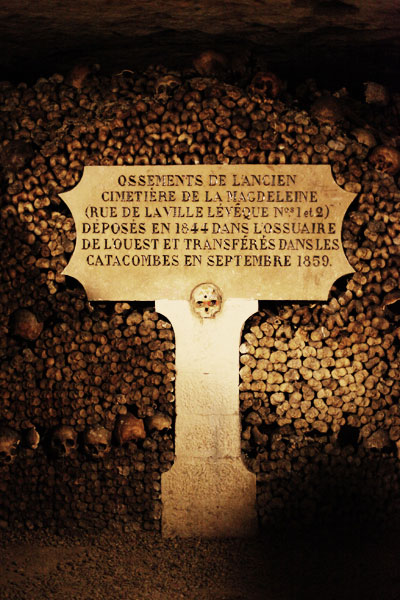
* Disclaimer: As is becoming the norm with Luke’s contributions, TheExpeditioner.com hereby takes no responsibility for your imprisonment, injury or death as a result of mimicking any of the following actions described in this article
People say that the land beneath Paris is like Swiss cheese. Outside the frequented subway, most tourists and residents spend their lives aware of only the Paris aboveground. But beneath the thin slice of city on the crust is a vast city below known only to a few.
Since the start of the Middle Ages, Paris has been built just as much underground as it has above. As deep as 30 meters below the city, subways, sewers, telephone grids, quarries, water lines, bomb shelters, crypts and tunnels for both the living and the dead form one of the largest man-made underground networks on the planet.
Just before the 19th century, Paris public health officials ordered all the cemeteries inside Paris closed. The remains of some six million dead, three times the current living population of Paris, needed to find a new final resting place. A network of quarries below the city was the decided destination for the bones.
If you have ever wondered now much space six million skeletons take up, the answer is a massive amount. Le Tombe-Issorie, now simply known as Les Catacombes, is a city for the dead below the city for the living. These anonymous bones are stacked underground in macabre arrangements.
Visitors are welcome in select areas of the catacombs, but because of its massive size, most of it remains forgotten. Or at least, forgotten to public.
The forgotten maze of taverns and passageways in the catacombs has spawned a class of people called cataphiles, or catacomb lovers. Using old maps of the quarry, and using technology to make digital layouts, these youthful lawbreakers have become masters of this underground world. Equipped with headlamps and knowledge of these forbidden caverns, they escape to Paris’ underground where they gather in groups around campfires, drinking beer, playing guitar and, of course, making crapes.
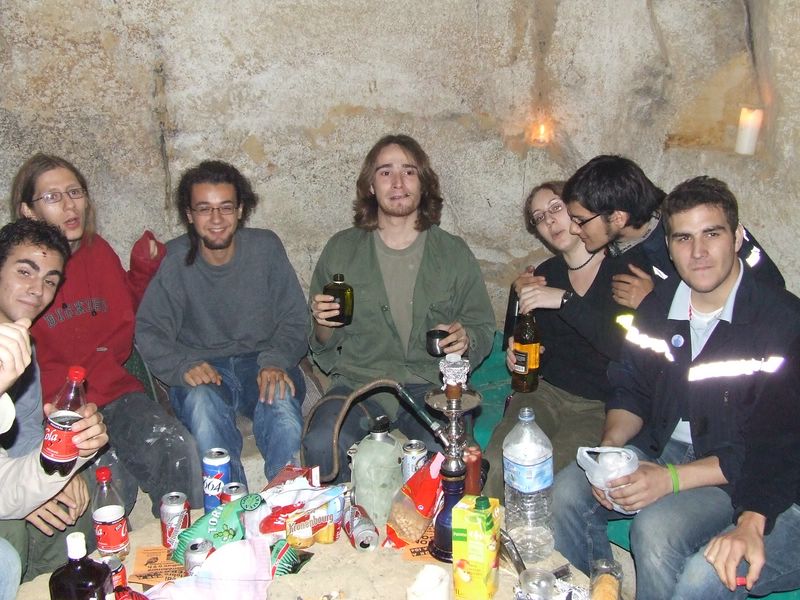
Though these groups normally number only a few, there have been underground concerts in these caverns with hundreds in attendance. The cataphiles are drawn here by the same force that has always drawn youth: an exciting place that they are forbidden by law from entering.
I first learned of the catacombs and their lovers at a bar in Paris’ Montmarte Quarter. In the same district where Picasso, Renoir and other artistic innovators famous enough to only need a last name, once drank wine and remade the world before blank canvasses, it seemed a good place to ask, “Can we make an unofficial visit to the catacombs?”
“Yes!” my friends answered, and we began to make plans.
But having only a short time left in Paris was not enough for these plans to be carried out and I left without a visit to them. I learned that when doing illegal things in Paris, you should give yourself at least a few days to plan properly. I was at least able to talk with Parisians who had been visitors to this underground world. They showed me photos and told me their tales.
Aboveground, Paris, like all big cities, can be hectic. Everyone is rushing to anywhere. But below ground, people can be and do as they like. Provided, of course, they don’t get caught. Liability behooves me to warn any would be unofficial visitors that any illegal activity carries with it an array of risks. The book, “Beneath Paris,” cautions appropriately:
Visiting subterranean Paris outside designated areas is not to be taken lightly. Authorization is imperative, as is strict adherence to safety regulations. Otherwise, intruders may be prosecuted, or worse. Serious accidents, deadly accidents, do happen. We will spare you an exhaustive list, but intruders run the risk of falling, drowning; being asphyxiated by toxic gases, being electrocuted; being crush by falling rocks, catching any number of infections, and getting lost.
Not finding a good cataphile guide in time, I opted not to run these risks. I would not recommend anyone taking them. Having said that, sound advice is not what stops risk-takers from taking risks. People run risks all the time for a thrill. We jump out of planes, attach bungee cords to ourselves and jump off bridges, and go careening down snow-covered peaks with one or two boards attached to our feet. Traveling, and just living, is risky.
Since the size of the catacombs makes it virtually unguardable, cataphiles will continue to visit, and if you talk to one of them, they will encourage you to join them and tell you that it is not risky if as long as you know what you are doing.
I have heard that said many times and seen both positive and negative outcomes happen to those uttering these words. So if I go to Paris again, an unofficial visit to the catacombs will certainly be something I will consider.

About the Author
 Luke Maguire Armstrong lives in Guatemala directing the humanitarian aid organization, Nuestros Ahijados. His book of poetry, iPoems for the Dolphins to Click Home About (available for sale on Amazon.com) is especially enjoyed by people who “don’t read poetry.” (@lukespartacus)
Luke Maguire Armstrong lives in Guatemala directing the humanitarian aid organization, Nuestros Ahijados. His book of poetry, iPoems for the Dolphins to Click Home About (available for sale on Amazon.com) is especially enjoyed by people who “don’t read poetry.” (@lukespartacus)
The post Luke’s Europe Trip: Dispatch #3 (Plan your Illegal Activities Ahead: Unofficial Visit to Paris’ Underground) appeared first on The Expeditioner Travel Site.
]]>The post Video: This Is The Way To Experience Paris appeared first on The Expeditioner Travel Site.
]]>With over 29 million visitors a year, Paris is the most visited city in the world. With that number of visitors, truly it must be impossible to find your own little nook of the city where you can blend in and experience the city like a local. Right?
Cue The Frugal Traveler, circa summer ’08, who, in the above video, decided the best way to see the city was to shack up in a rented apartment in the 10th Arrondissement he found on one of the rental sites, VivaStreet.fr and pap.fr (it’s not clear which one gave him the the most luck).
A block to the east was the Rue du Faubourg du Temple, “an immigrant entrepreneurial zone where halal butchers hacked lamb shanks and West African restaurants were almost indistinguishable from the traditional French brasseries next door.” To the west was the Canal St.-Martin and the waterside cafes and shops exuding a youthful, artistic vibe.
At 2:48 Matt hits up Librairie Ulysse, the oldest travel bookstore in the world, where he picks up a copy of Nicholas Bouvier’s “The Way of the World,” a book the owner describes as “the best travel book ever.” Bold statement. I’m at least adding it to my Amazon wish list.
*Editor’s Note: I was this close to posting about a video by Rick Steves on Lisbon, but I just couldn’t bring myself to do it. In the interest of full disclosure, here’s a link to the video. It’s actually a pretty good clip. You just didn’t hear it from me.
The post Video: This Is The Way To Experience Paris appeared first on The Expeditioner Travel Site.
]]>The post Off The Beaten Path In Paris appeared first on The Expeditioner Travel Site.
]]>
Seeing Paris has always been a dream of mine, as for most anyone I have ever met. The idea of walking along the Seine, sipping coffee with croissants and divulging a bottle of delicious house wine over dinner is enough to make me book a flight tout de suite. I am working on my self-control.
Nonetheless, as a friend just informed me, tourists are pervasive in Paris. To me, tourism is part of what keeps a city financially afloat, yet, it is the underground paths and the off-beat tracks that keep a city alive.
For this reason, I was excited by the NY DailyNews’ look at the “other” Paris . It aims to describe the sights that most tourists don’t get to see, mainly due to the attraction to the more popular attractions like some tower called Eiffel, a gothic-cathedral and a rather large museum used for the set of a Dan Brown movie. This article suggests taking a different route and seeing the churches or regions outside the typical tourist manual.
Nevertheless, I forwarded this article to my friend and he said it was . . . well, he didn’t agree with it. His reasoning was that most of the attractions in the article are outside of Paris, one of which is 200 kms (124.3 miles) away. Although these sights would be interesting, he offered me a list of neighborhoods inside Paris that most tourists have yet to experience:
Butte aux Cailles, Canal Saint Martin, Place Sainte Marthe, Rue de Belleville, Oberkampf, Ménilmontant (rue Boyer), Château Rouge-rue de Montreuil, rue Royer Collard, rue Quincampoix, Parc Montsouris-cité universitaire, Parc Montceaux, Coulée verte, Parc de Belleville . . . (just to name a few.)
He told me there are other neighborhoods even more hidden that are worth a look, but the ones listed above are the more well-known hidden paths. I checked out these neighborhoods online and found lists of things to do and see. There is such a community of information that I can’t help but think: this is where the true pulse of Paris lies.
By Brit Weaver

About the Author

Toronto born and based, Brit is an avid leisure cyclist, coffee drinker and under-a-tree park-ist. She often finds herself meandering foreign cities looking for street eats to nibble, trees to climb, a patch of grass to sit on, or a small bookstore to sift through. You can find her musing life on her personal blog, TheBubblesAreDead.wordpress.com.
The post Off The Beaten Path In Paris appeared first on The Expeditioner Travel Site.
]]>The post Tips For France In 2010 appeared first on The Expeditioner Travel Site.
]]>
Okay, Rick Steves may not be my favorite guy in the world (see my last post), but his writing is everywhere, and since the Travel Show (again, see my last post) is going to be Stevesless this year, I thought we’d check in on him today.
This week Rick is giving us the heads-up on tips for France in 2010. For example, the Eiffel Tower has set up a new online reservation system, helping to alleviate line congestion at the most visited monument in the world. Those hoping to visit the Picasso Museum will be out of luck for a couple years while the museum renovates, but Paris’ Catacombs has been reopened after a recent vandal-related closing (come on kids, time to check out some skeletons!) as well as has Versailles after its own multi-year makeover.
Rick warns travelers to Chartres’ cathedral to be prepared to encounter a wall of scaffolding around the iconic church, but don’t worry, the inside’s untouched.
And for travelers in the search of wine on Provence’s Cotes du Rhone wine road, Rick recommends Domaine de Mourchon, the “buzziest” of the vineyards in the area and run by a couple of Scots, which Rick notes “eliminat[es] the language barrier.” Because, you know, incredulously, the French like to speak French.
The post Tips For France In 2010 appeared first on The Expeditioner Travel Site.
]]>The post So What Should You Do In Paris? appeared first on The Expeditioner Travel Site.
]]>
Don’t see the Mona Lisa, climb the Eiffel Tower, or grab a coffee at Café de Flore? Well, not exactly, but taken from an expert on Paris, there are plenty of ways to get the best out of Paris, without doing what Paris is best known for.
For example, want a great view of the city without an overpriced ticket to do so? Avoid the Eiffel Tower and take in the sights from Tour Montparnasse or the Arc de Triomphe (or, as one commenter points out, just hoof it to Montemartre).
Or want to fit in a side-trip and are thinking about seeing Nice? Au contraire. Described as a “busy city with terrible traffic, little history or culture, and an ugly pebble beach,” the author recommends visiting the nearby Loire Valley for great sights and unforgettable food and wine. Read the full article here.
The post So What Should You Do In Paris? appeared first on The Expeditioner Travel Site.
]]>The post Tour The “Other” Paris appeared first on The Expeditioner Travel Site.
]]>
I never understood why people take those tours that lead you to all of a particular city’s most popular attractions. Do you really need to shell out 20 euros to have someone point you in the direction of the Eiffel Tower or Vatican City? That’s like four bottles of wine you could’ve spend that cash on.
However, if you’re looking for a few tours that will show you some of Paris’ less traveled locations (oh man, I’m just itching to insert a Paris Hilton joke here, but I’ll refrain for the sake of keep this site at least PG-rated), check out this guide to Paris’ unusual tours. From scouts that will reveal some of Paris’ most famous filming locations (oh man, another joke opportunity), to guided jaunts through the private homes and courtyards of the city’s working artists, this guide will help you go where few men have have ever gone before in Paris (wow, that’s number three).
The post Tour The “Other” Paris appeared first on The Expeditioner Travel Site.
]]>The post Paris. Beautiful. Timeless. On The Cheap! appeared first on The Expeditioner Travel Site.
]]>Something about the fall makes people want to travel to Paris. Something about fall also makes people feel very poor. Oh yeah, that’s because we all blew our savings living it up during the summer months. No worries, fall also means we get a rash of “Paris on the cheap” tips from our travel peers.
The above vid reveals 7 tips for saving money around one of Europe’s most expensive cities, including the well-known fact that the museums in Paris are free on the first Sunday of the month.
Not to be outdone, BootsnAll has their own cheapo guide, breaking down how you can scratch by on less than $100 a day. Try downloading a free audio walking tour, picking up wine for less than 3 euros a bottle, and eating out at the many street vendors around the city known for their amazing quality (not to brag, but we were all over this one a while ago).
The post Paris. Beautiful. Timeless. On The Cheap! appeared first on The Expeditioner Travel Site.
]]>The post Bringing The Beach To Paris appeared first on The Expeditioner Travel Site.
]]>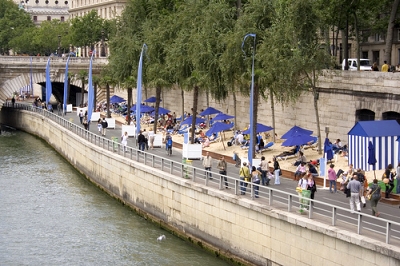
While you’re toiling away at your business-centric job this August, the French are busy turning even their economic centers into giant summer wonderlands where they spend their monthlong vacation lounging on man-made beaches on the Seine. File this one under: “Things to learn from the French.”
Per ABC, “now in its eighth year, the monthlong Paris Plages transforms a large section of the Seine’s stone and asphalt Right Bank into a public beachfront” including “a pool area and activities for children, a business section with Wi-Fi and newspapers for sale, and nighttime concerts.”
Sigh, when will we Americans learn?
The post Bringing The Beach To Paris appeared first on The Expeditioner Travel Site.
]]>